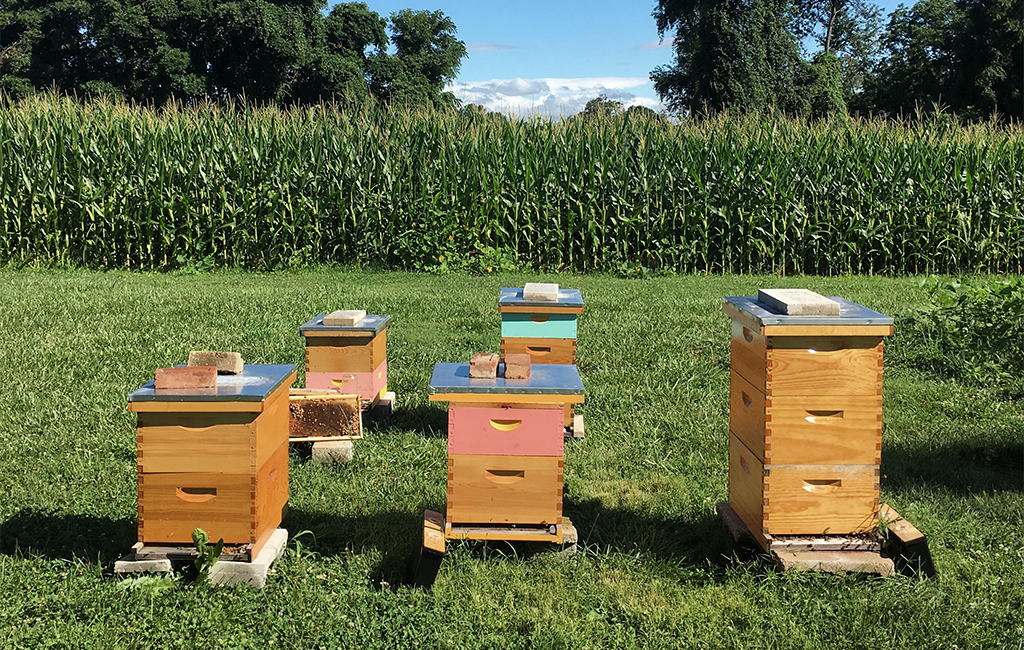
It’s always a joy to discover new and exciting ways of bringing life into our backyards. As an industrial mechanic with a passion for affiliate websites, I can’t stress enough the satisfaction derived from seeing things come together, just like in building a beehive. In a world where the importance of self-sufficiency is steadily growing, let’s delve into how you can make your backyard a buzz with activity through your own beehive. If this intrigues you, you’ll definitely love the insights provided in the self-sufficient backyard – a guide that shows you how to turn your small backyard into a thriving ecosystem.
Step 1: Choosing Your Beehive
When starting out, consider the Langstroth beehive – the most popular type in the US. It’s simple, highly effective, and designed to facilitate honey harvesting without destroying the bee colony.
Step 2: Setting Up Your Beehive
When setting up your beehive, consider the following factors: sunlight, wind, and accessibility. Position the beehive entrance to face the morning sun, shelter it from strong winds, and make sure it’s easy for you to access.
Step 3: Bee Installation
Bee installation is a critical part of the process. Purchase a bee package or nucleus from a reputable supplier, then carefully transfer them into your hive. Don’t forget to feed your bees sugar water until they have adequate honey reserves.
Step 4: Hive Maintenance and Honey Collection
Maintaining your hive involves regular checks to ensure the health of your bees and honey production. Equipment like a smoker and hive tool will come in handy during hive inspections. Once honey-filled combs are capped, you can harvest your honey.
Step 5: Preparing for Winter
To help your bees survive winter, ensure they have ample honey reserves. If they seem short, feed them with sugar water. Additionally, reduce the hive entrance to keep rodents out and insulate the hive to keep the colony warm.
Creating a beehive in your backyard offers numerous benefits beyond honey production. Bees contribute to a vibrant ecosystem through pollination, and this beekeeping venture could be a significant step towards a self-sufficient lifestyle. You could even consider scaling this up, as detailed in this article on cultivating protein-rich food in your backyard.
Before I wrap up, it’s important to note that beekeeping, like any other venture, comes with its challenges. However, with careful planning and execution, it’s a rewarding and enjoyable pursuit. I found this article inspiring, it shows how even celebrities are embracing nature’s gifts, and that includes honey, of course.
Beekeeping is a journey that rewards not just with honey, but with the priceless experience of contributing to the environment while working towards a self-sufficient lifestyle. So why wait? Let’s bring that buzz into your backyard!
The Ecological Impact of Beekeeping
As we continue our journey into beekeeping, it’s essential to understand the far-reaching benefits of this practice beyond honey production. Bees are tireless pollinators that play a crucial role in sustaining our ecosystems. They help fertilize flowers by transferring pollen from the male parts of a flower to the female parts. This results in a successful plant reproduction process that yields fruits and vegetables, contributing significantly to the diversity of plant and animal life. In essence, your backyard beehive will have a positive impact that extends to your entire neighborhood and beyond.
Understanding Bee Behavior
Just as it is with any livestock management, understanding the behavior of your bees is crucial. Bees communicate and navigate through the ‘waggle dance’, a unique form of movement that directs worker bees to a source of nectar or pollen. Furthermore, bees operate in a structured colony with the queen bee, worker bees, and drones each having distinct roles to play. Such understanding helps you make informed decisions about the care and maintenance of your hive. Remember, a happy, well-adjusted colony means more honey for you and better pollination for your garden.
Overcoming the Challenges in Beekeeping
Beekeeping, like any other form of farming, comes with its unique challenges. Disease management is key in maintaining a healthy bee colony. The Varroa mite is a common parasite that can devastate your bee colony if not properly managed. On top of this, bees can sometimes swarm, a natural but disruptive process where a queen bee leaves the colony with a group of worker bees to form a new hive. Preemptive measures such as regular hive inspections and maintaining optimal hive conditions can help you overcome these challenges and ensure a thriving bee colony.









